Walking (disrupting, blurring, glitching) — margin to centre
Prompted by the invitation of Utopian Hours 2022 hosted by Associazione culturale Torinostratosferica
MARGIN TO CENTRE
- Search for the border of the city, search for the centre, online. Top-down.
- Choose a location at the city border, the margin.
- Record the day, time, conditions around you. Take a photograph.
- Walk in an unorganised line but concentrated direction to the city centre.
- When conditions seem to noticeably and considerably change, take a photograph.
- Do not stop walking, record your observations through sound notes.
- Once you feel you have arrived at the centre, record the time and conditions around you.
- When possible, repeat this exercise from different marginal points, at different times, in different conditions.



10:15. Sunday. It’s raining, pouring. I’m at one of the many marginal points of the city of Turin, Lavazza bus stop
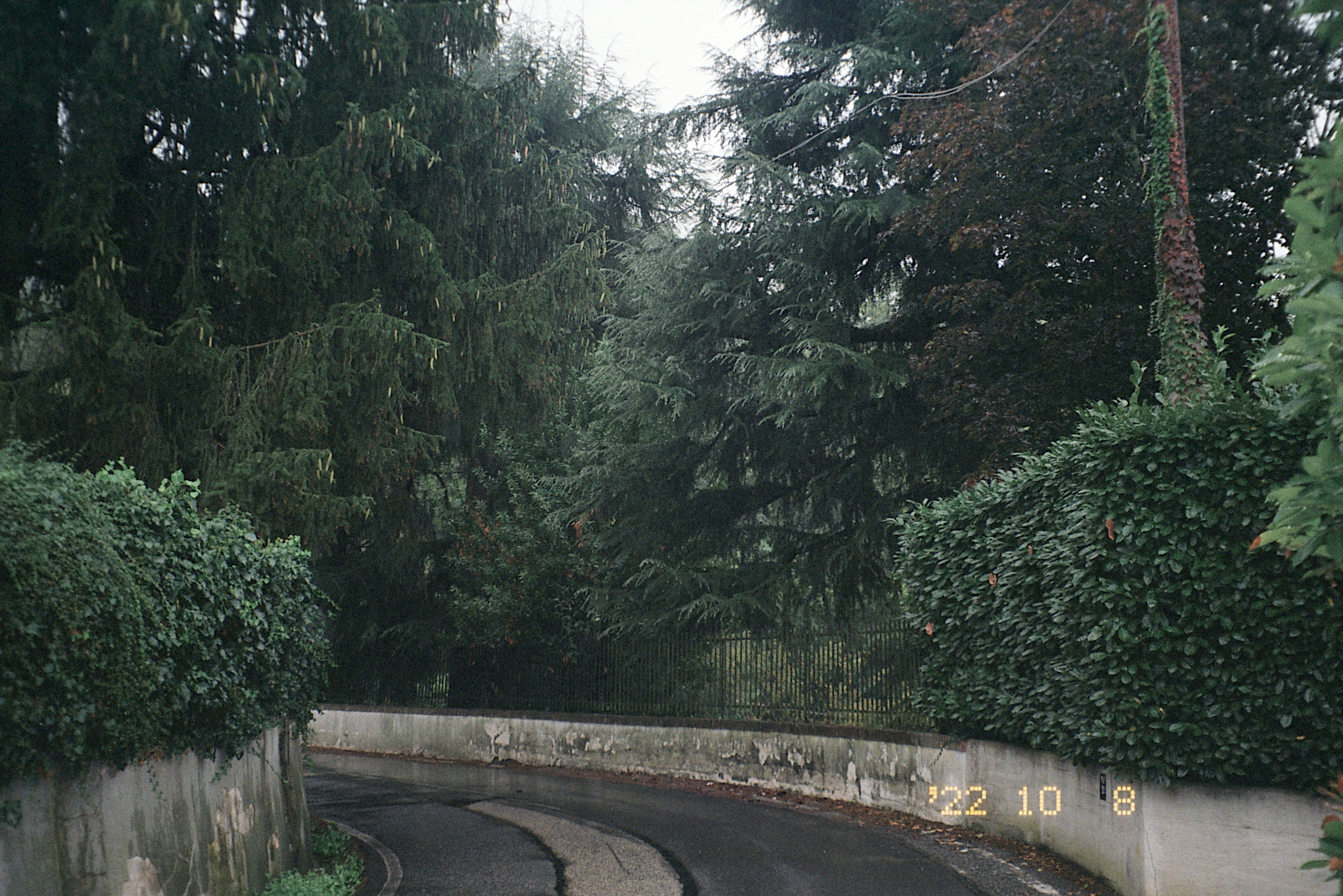



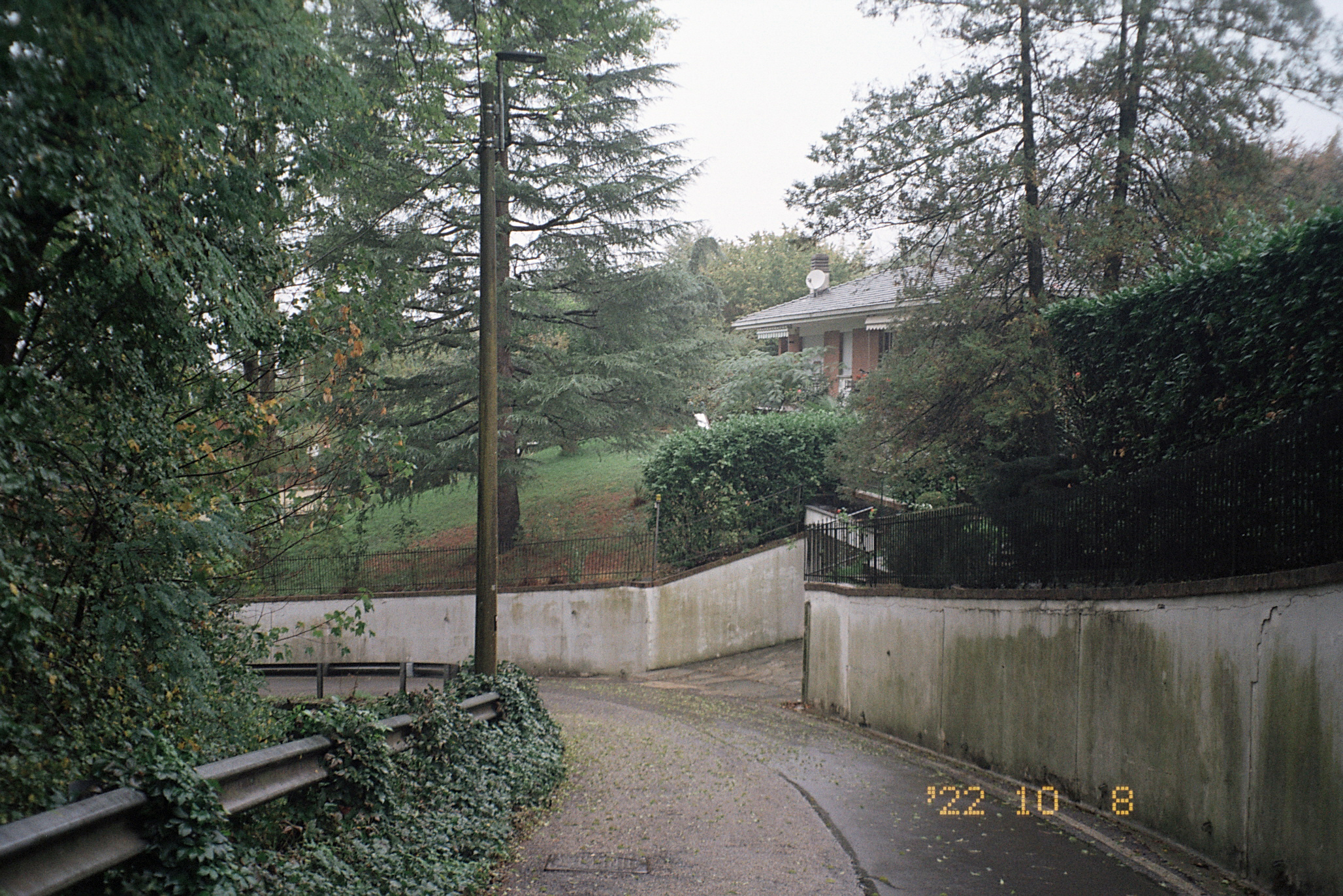
Here and there, my sense of safety is revived by the occasional car curve mirror, never intended for pedestrian use but at least indicated to me how to move my body down into the city centre. Avoiding the danger of speeding cars.



I have to pay close attention to the ground when walking down from Lavazza, curving roads surrounded by a beautiful natural landscape. I have to pay the outermost attention to ensure that I am not be hit by a car. Why? There are no pavements on these roads, or at most, 10 m length stretch pockets.


Bus stops help as signals that indicate a possibility of people around them, but I’m not met with any people at any of these bus stops. Perhaps because it is Sunday. Sometimes, I see bus stops merging into gateways. A little hint of what might be possible when we blur public and private land, or at least negotiate enclaves and pockets for pause where space is limited and pedestrians have no physical room.



As I continue to walk down towards the centre through the proclinear park, it’s encouraging to see how initiatives to pedestrianise and integrate nature can co-exist and be taken seriously. Another hint.
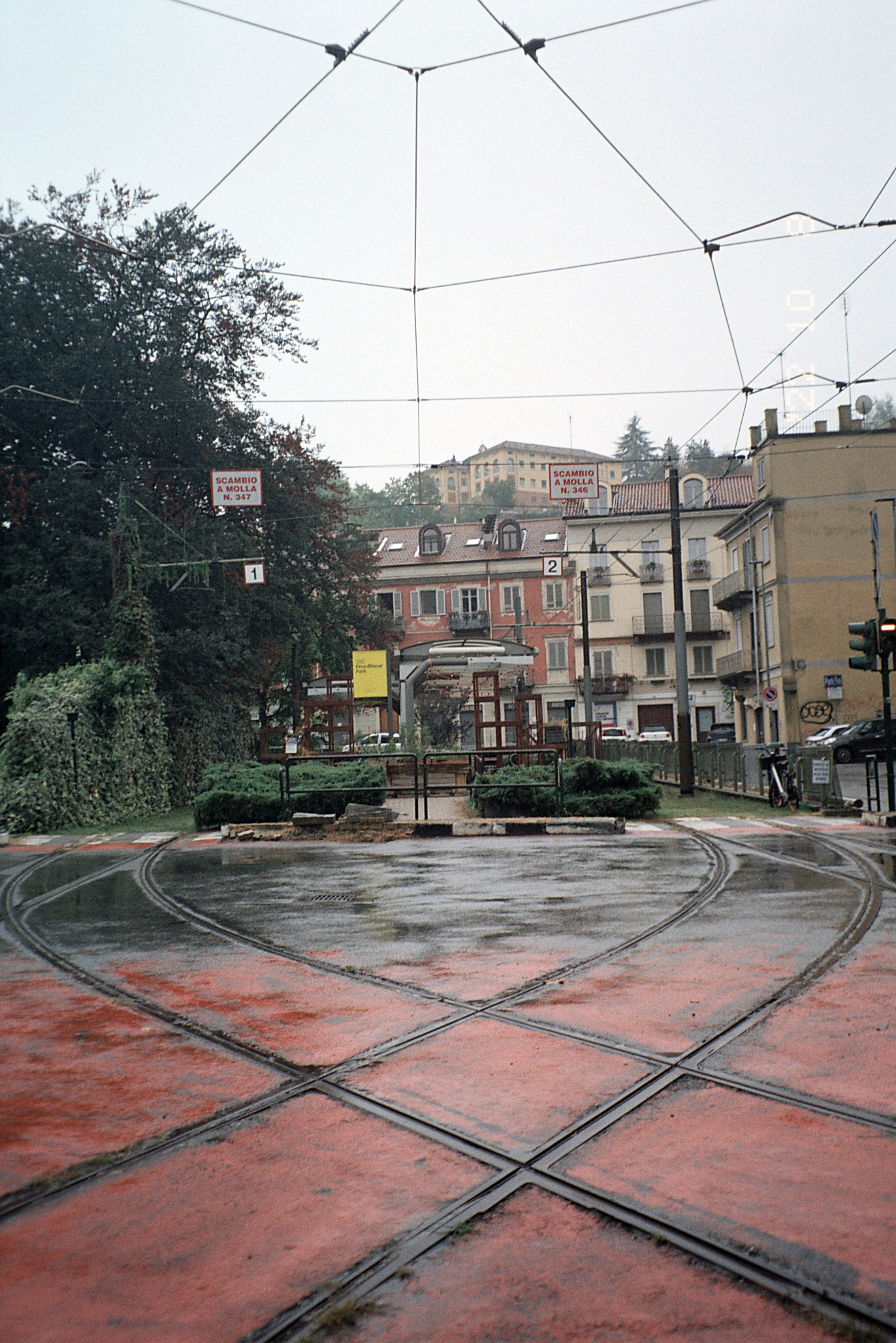
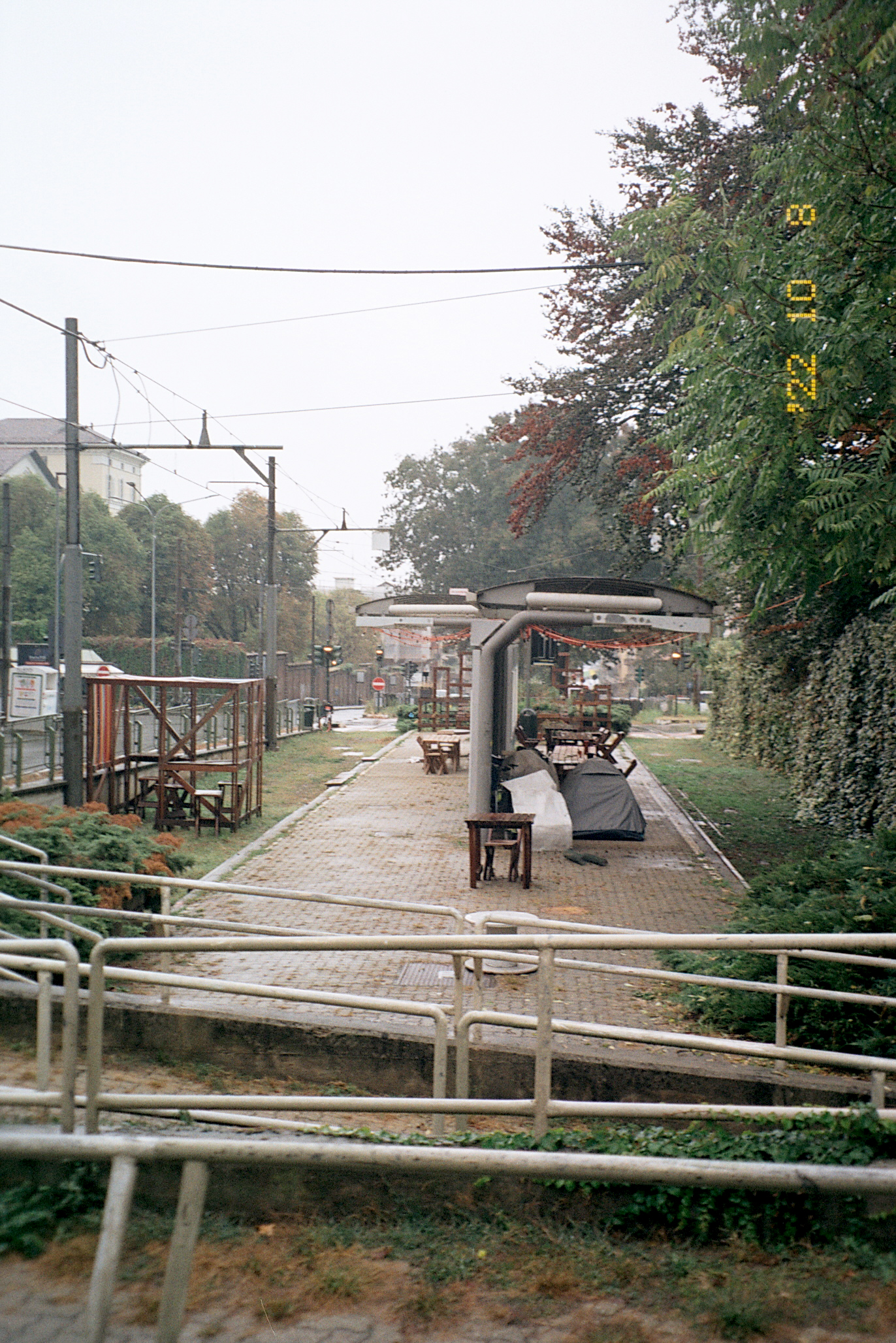

But social challenges persist. Homelessness.
How might we imagine custodians as integral parts of public developments? Especially since dwelling in public exists in multiple ways. How might we use custodianship to secure safer conditions for homeless bodies in the city?


Nature is our biggest and most precious resource. I’m walking on a rainy day, and what a beautiful mixture of senses I am met with — the smells of the forest, the chiming yet subtle songs of birds, the harmonic sounds of raindrops. Stairs and long footwalk avenues parallel to the riverside - the public activation possibilies are endless. Imagine a fashion runway show accessible to all on the street? Imagine the stairs populated with a diverse audience?

I’m approached by a man. Slippages in the landscape through stairs offer choice to change my course without changing direction. I’ve found a route out - down to the river. There are more joggers here it seems, with dogs. Almost every fourth person in Turin has a dog it seems.



Relief. I see, I am seen (by many). Relief. I connect with the water, another asset of the city.
How might I spend more time here? Imagine if it were possible to immerse oneself in there?



Textures are shifting, becoming more concrete - more form-based. It’s more convenient to walk.

I’ve arrived at the city centre of Turin, or at least it feels like it. It’s difficult to pin-point - but I would say it's the vibrancy that makes me think so. The centre is all about books!
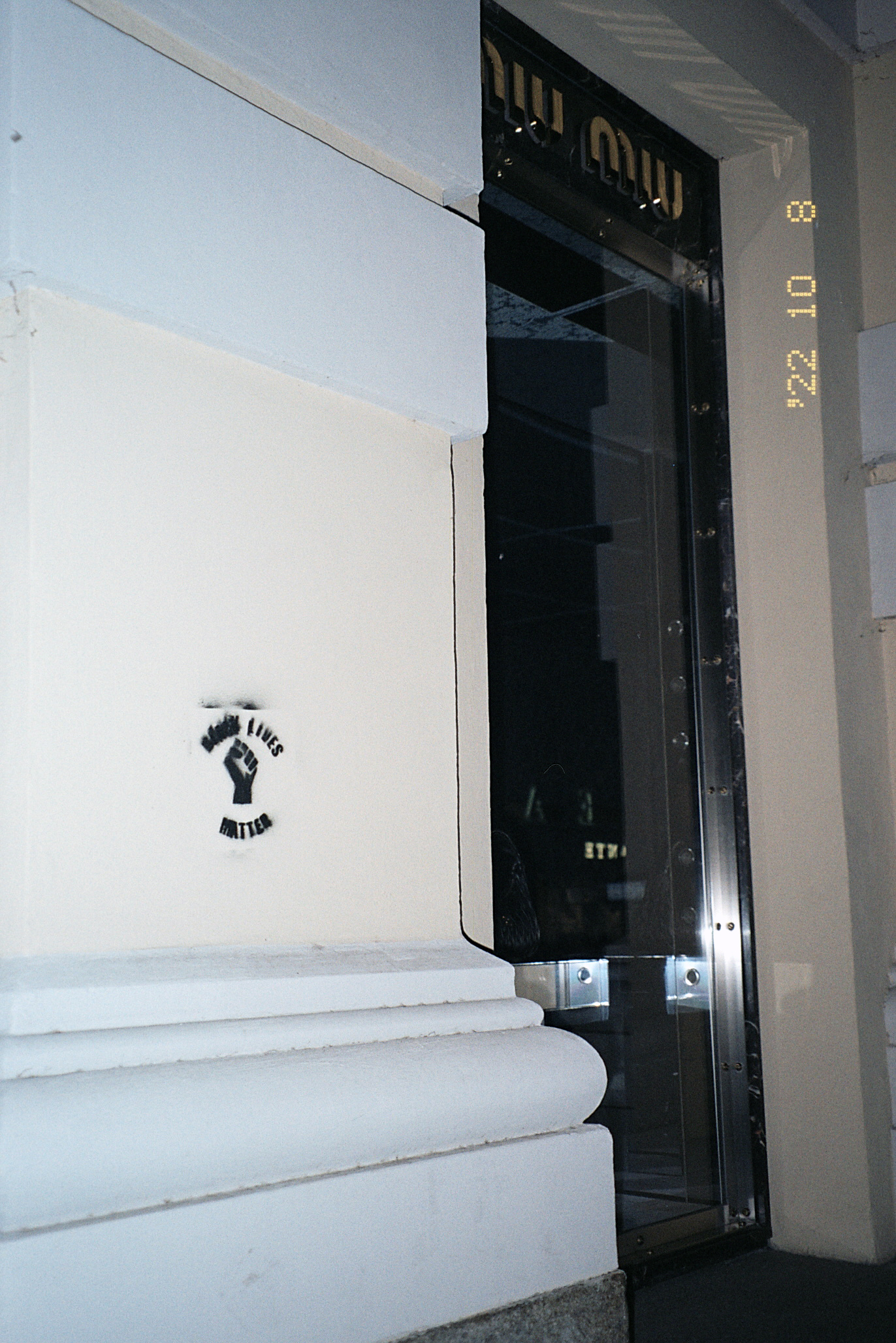



Everyone gathers around books - but where do they go to read? Perhaps the forest up the hills call for, in addition to parks, spaces to dwell in public, spaces to spend time away from the city buzz.
There is value at the hilly margin.
Khensani Jurczok-de Klerk© 2024
